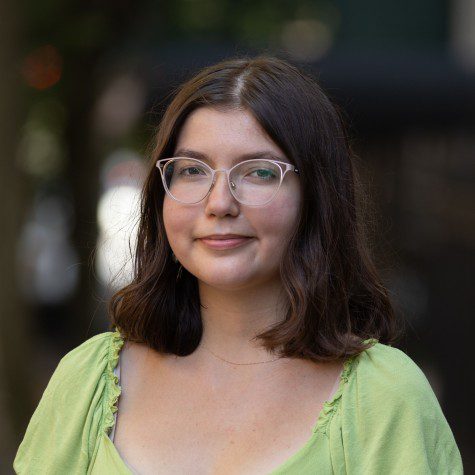For most people, it has been a while since they’ve had a large gathering with family members. It’s easy to romanticize the idea of classic family gatherings during the holiday season. However, one watch of “Shiva Baby,” and that rosy image is likely to shatter.
Based on her NYU senior thesis short film of the same name, Emma Seligman’s “Shiva Baby” follows Danielle (Rachel Sennott). Danielle has to confront the people who create problems in her life, both romantic and familial, at the place it would be most crude to: a family shiva. While the original short was focused on Danielle running into her sugar daddy, Seligman uses the feature to expand the cast of nuisances whom she must endure.
Rather than mourn, Danielle deals with her family, who give her a hard time about college. It’s joked that she makes up her degree but still receives a diploma, seemingly a knock at Gallatin. She’s constantly competing with her family friend and ex-girlfriend Maya (Molly Gordon). Last but not least, Danielle’s sugar daddy Max (Danny Deferrari) makes an unexpected appearance.
Seligman creates a sense of confinement by filming in a single location. The result is a 77-minute film that feels like hours of stressful claustrophobia. Danielle cannot go anywhere without having to face one of the three conflicting forces. The result is an incredibly efficient screenplay, filled to the brim with uncomfortable conversations and awkward glances. Danielle is busy with one obstacle while foreseeing another peeking its head over the horizon. The moment where Danielle meets her sugar daddy with her parents encapsulates Seligman’s brilliant hybrid of comedy and horror.
Maria Rusche, who does the cinematography for the film, brings claustrophobia to life. Handheld camerawork is often criticized as a lazy technique for expressing instability. Here, it captures the chaotic energy of the space. As the viewer, your head whips from talking head to talking head, trying to keep track of everyone. The 2:35:1 aspect ratio stretches the frame wider than normal, which allows for more people to outnumber Danielle in the frame. It’s also vertically short that it doesn’t allow her to get her head above water. The moments where the film leaves the main rooms of the shiva hold an underlying tension. The audience anticipates someone to fill the blank space left in the frame when, for example, Danielle and Maya talk outside.
Unlike the short, the feature brings the characters outside for its sense of conclusion. After Danielle convinces her parents to leave and embarrasses herself in front of her relatives, they head back to their car for one last bit of stress-based comedy. Danielle and Maya are in the process of making amends when they see that Danielle’s parents are not only driving Maya home with them, but her sugar daddy and his family. This situation is one more test of Danielle’s strength in the face of her three stressors.
Danielle succeeds by embracing the claustrophobic circumstances. Crammed into the back row, she holds Maya’s hand. The two meet each other’s gazes warmly. Danielle’s avoiding the interpersonal conflicts in her life. For most of the film she continues to do so, but in the end, she realizes she can’t keep running. Thanks to the shiva, she is able to set out on what will hopefully be a new, productive path of her own.
Email Sebastian Zufelt at [email protected].
























































































































































